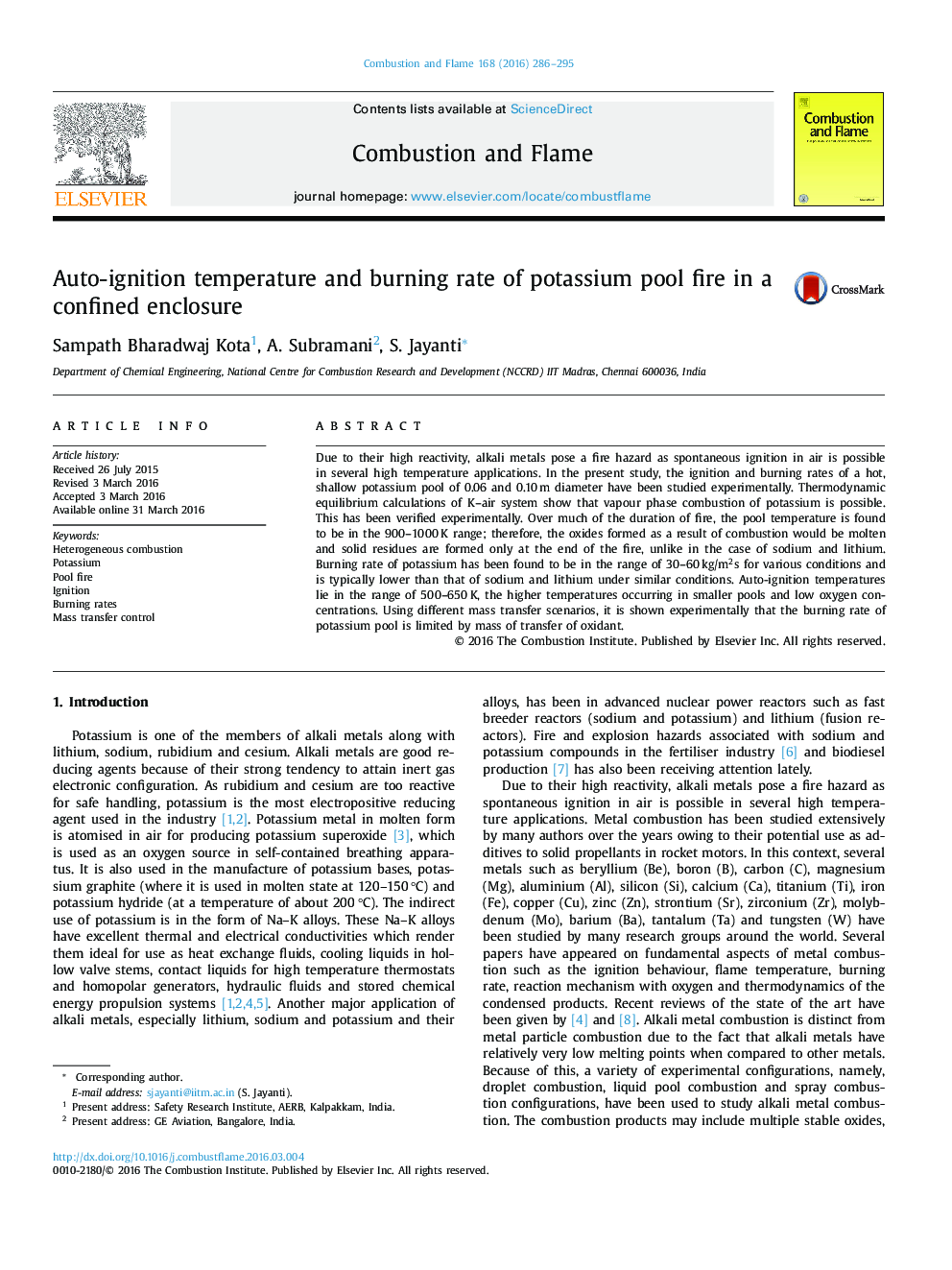| Article ID | Journal | Published Year | Pages | File Type |
|---|---|---|---|---|
| 6594057 | Combustion and Flame | 2016 | 10 Pages |
Abstract
Due to their high reactivity, alkali metals pose a fire hazard as spontaneous ignition in air is possible in several high temperature applications. In the present study, the ignition and burning rates of a hot, shallow potassium pool of 0.06 and 0.10Â m diameter have been studied experimentally. Thermodynamic equilibrium calculations of K-air system show that vapour phase combustion of potassium is possible. This has been verified experimentally. Over much of the duration of fire, the pool temperature is found to be in the 900-1000Â K range; therefore, the oxides formed as a result of combustion would be molten and solid residues are formed only at the end of the fire, unlike in the case of sodium and lithium. Burning rate of potassium has been found to be in the range of 30-60Â kg/m2s for various conditions and is typically lower than that of sodium and lithium under similar conditions. Auto-ignition temperatures lie in the range of 500-650Â K, the higher temperatures occurring in smaller pools and low oxygen concentrations. Using different mass transfer scenarios, it is shown experimentally that the burning rate of potassium pool is limited by mass of transfer of oxidant.
Related Topics
Physical Sciences and Engineering
Chemical Engineering
Chemical Engineering (General)
Authors
Sampath Bharadwaj Kota, A. Subramani, S. Jayanti,
